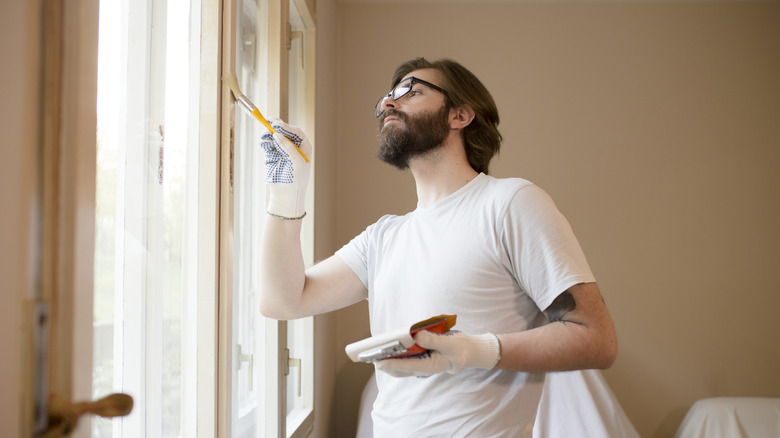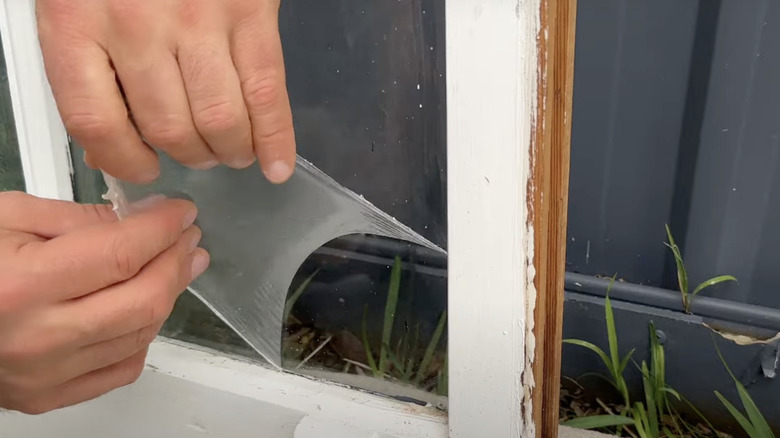Is Liquid Masking A Good Option To Protect Your Windows When Painting?
We may receive a commission on purchases made from links.
Painting your window sashes and grids is a quick way to freshen up a room or spruce up your home's exterior. While some folks prefer to tape the glass around the window grids with painter's tape to protect it from paint, others prefer to skip this tedious step and just scrape the paint off the glass with a razor once it's dry. However, liquid masking presents a third option that has been steadily gaining popularity in both the pro and DIY worlds. Many people feel it's a game changer because it saves them the time and effort of having to tape or scrape, especially when you have multiple windows to paint. Others feel it's a genius hack that ensures the cleanest results every time, making it the best option to protect your windows from paint.
Here's how liquid masking works: It's a water-based clear acrylic coating that you can apply directly onto your interior or exterior window glass. You can either roll it on with a paint roller, brush it onto the glass, or spray it on — two coats is recommended. It's specially formulated to peel off easily once it dries and conveniently take any errant paint splotches with it. There are a number of different liquid masking brands available on Amazon, such as Associated Paint Liquid Masking H2O and JASCO Liquid Mask & Peel. Both products are very well-loved, but some reviewers feel there are a few drawbacks and prefer to stick to taping or scraping. We're giving you the full scoop to help you determine whether it's the best method to use when painting your windows.
Pros and cons of using liquid masking when painting windows
Type the words "liquid masking" into any search engine, and you'll find a vast array of DIYers and professionals singing its praises. Some of its advantages include easy application, precise control around trim, and fast removal. But by far, the resounding benefit from all who love this product seems to be the amount of time it saves you from taping. In fact, to prove how much faster it is than taping the glass, the DIY couple behind @emyludesigns competed using both methods simultaneously, with the liquid masking being the clear winner. In addition to saving time from taping, it only takes about 15 to 20 seconds to peel off each window, which is also much faster than the time it'd take you to scrape paint off the glass. Not to mention, if you accidentally get liquid masking onto the wood trim around the glass, it simply acts as a primer for the paint.
Though the reviews for liquid masking are generally positive, some do find that there are a few drawbacks. One of the biggest complaints about the product is that it takes too long to dry (about an hour per coat), which requires you to wait before painting. Also, some DIYers found that the liquid masking doesn't always peel off cleanly, so you may end up having to use a razor to scrape anyway. The bottom line? As long as you don't mind sacrificing time upfront to let it dry and you apply thick enough coverage so that it peels easily, this is one DIY painting tip that will make life much easier.

